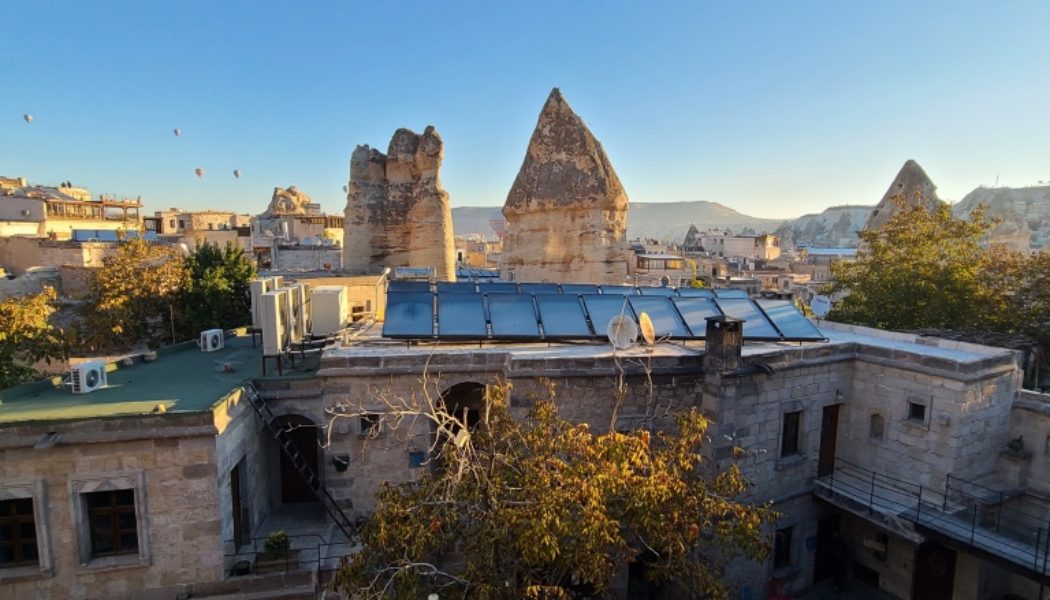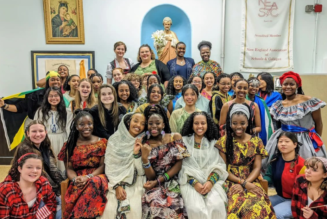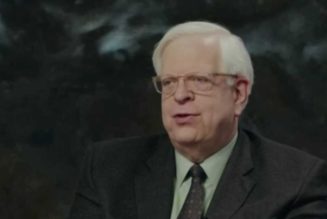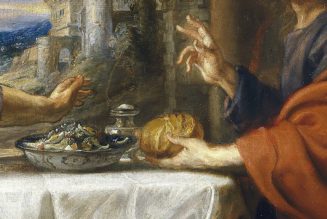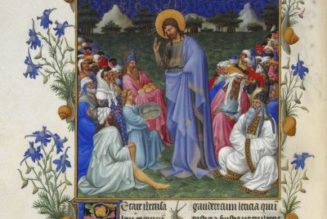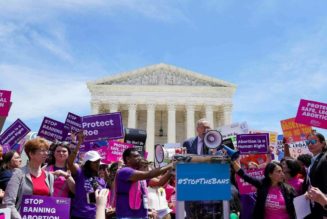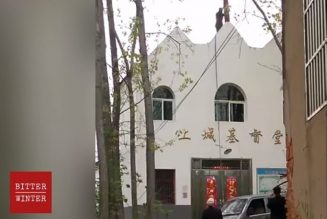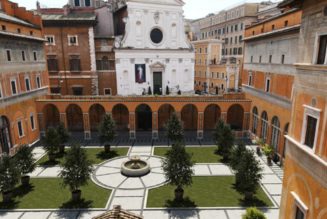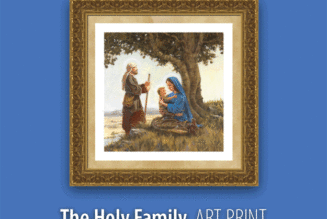Note from the Author: Copy/paste GPS Coordinates listed below into Google Maps to see or travel to each location.
We woke up to a beautiful, clear Fall morning in Göreme and it only got more beautiful as we took in the otherworldly landscape and the hot air balloons drifting slowly through the blue sky. Below is the view from the balcony of our hotel where the breakfast room was.

After firing down a quick breakfast, we checked out of our hotel and got on the road again. Thankfully, our next destination was just a 5 minute drive east of town: the world famous Göreme Open Air Museum (GPS Coordinates: 38°38’24.27″N, 34°50’43.55″E). The name of this place has always struck me as curious. My wife, when we were stationed in Turkey ten years ago, told me about how we had to see this place and my response was: “what is it and what will we be seeing?” haha
The Göreme Open Air Museum could be more appropriately titled the “Göreme Ancient Monasteries Complex.” The “museum”–which is a title the Turks often use for ancient churches they now charge entry fees to…haha–is a large outdoors area with numerous Cappadocian rock formations with ancient Byzantine chapels of varying complexity and artistry carved into the soft volcanic stone. It is a designated UNESCO World Heritage Site for good reason. Paintings of Christ, events from the Gospels, and the Saints cover the walls of the cave churches. For being exposed to the climates of snowy winters and blazing summers over the last 800 to 1,000 years, the paintings are still incredibly well-preserved, and the colors remain strikingly vibrant. Several monasteries (facilities for praying and living for those adhering to religious vows) with about 15 churches/chapels are found here. One of these was even a convent for nuns.
After parking the car, we walked through rows of closed up private souvenir shops. We got to the site soon after it opened, so it looks like many of the private vendors were still at home asleep. As we walked to the ticket booth for the Open Air Museum, I saw some ripe pomegranates hanging from a tree and even spotted some camels walking along in single file.
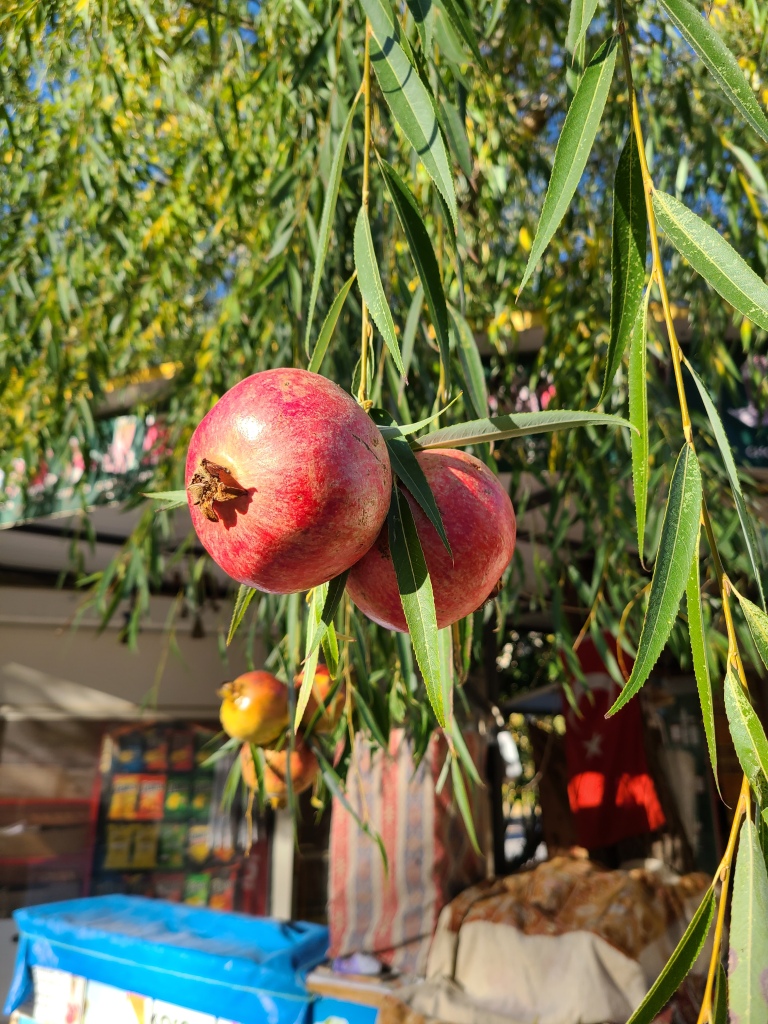

When we got to the ticket booth, there was already a sizeable number of people who had already purchased tickets and were winding around the complex peeking into the numerous cave churches throughout the area. After getting tickets, we started exploring the area. As we walked around, I noticed a bush with blue berries that I remembered seeing 10 years ago when I was here last…time flies!

Below is a picture of me in front of the ancient convent carved directly into the rock formation.

Below are some of my pictures from inside the various cave churches. I remarked to Father J. how awesome it would be to hold a Mass inside one of these churches. It was not possible for us here, but the altars inside most if not all of the cave churches were still intact (see following 2 photos).


Below is a painting of St. George and St. Theodore fighting a dragon.

The most magnificent of all the cave churches is known as the “Dark Church.” It received this name because its structure allows for very little natural light to come into the church. Because of this, the church has the best preserved painted images throughout the whole complex. The church is also in a cliff that overlooks the valley below; that it is harder to reach likely also helped it stay better preserved. The view from near the entrance to the Dark Church was incredible (see photo below).

We then stepped into the Dark Church to feast our eyes on the amazing holy images inside. The church has been dated to the 11th Century–900 years old.
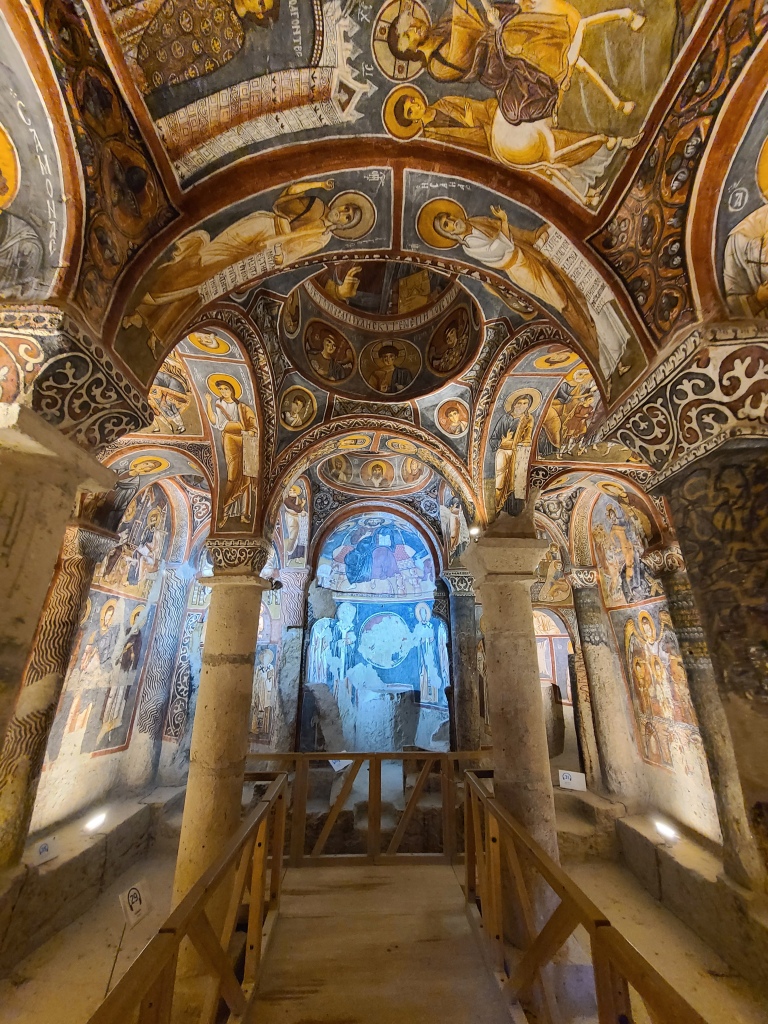

It’s very easy to visit these ancient churches and take all of the artwork for granted…i.e., “these paintings have just always been here.” But, when you really meditate on what it would have taken to make these churches and sacred images 1,000 years ago, it becomes all the more impressive. Consider the work to carve out–by hand–massive caves to use as churches. Then one had to purchase and gather sufficient paint and supplies (scaffolding, brushes, tarps) 1,000 years ago for massive projects like this. Consider the days, months, probably years it likely took for the artists to literally cover every square inch of wall and ceiling with detailed, colorful sacred images in all kinds of temperatures throughout the year–including extreme heat and cold. I wonder how many times paint was accidentally spilled in the process…I’m sure more than once…haha. Through it all, the love of the artists–probably monks or nuns–for Christ and the Church must have been simply unbelievable. Their work–such a gift to humanity–continues to bring people of all nations who visit closer to the Divine 1,000 years after they lived…incredible.



After exploring the Cappadocian Cave Churches of Göreme, Father and I set off to our next destination about an hour away: the modern city of Kayseri, also known as Caesarea Mazaca in ancient times. This major city in the ancient province of Cappadocia was home to many Saints in the early church. There is even a tradition that St. Longinus, the Roman soldier who thrust his Lance into our Lord’s side after He died came to Caesarea Mazaca and died as a Christian Martyr. The famous Church Father and Doctor of the Church, St. Basil the Great, lived here and was bishop.
The short drive from Göreme to Kayseri is nothing short of epic. Not only do you get to see more incredible rock formations and some of Cappadocia’s beautiful plains, you get to see the monumental Mount Erciyes (known in Greek times as Mount Argaios) (GPS Coordinates: 38°31’53.16″N, 35°26’52.77″E) in the distance. Yet another extinct volcano, similar to Mount Hasan/Argos, Mount Erciyes was worshipped by the Hittites before the Greeks occupied this area. Mount Erciyes is an impressive 12,851 feet high–over 2,000 feet higher than Mount Hasan (10,722ft). It dominates the landscape of Eastern Cappadocia as you can see in the photo below.
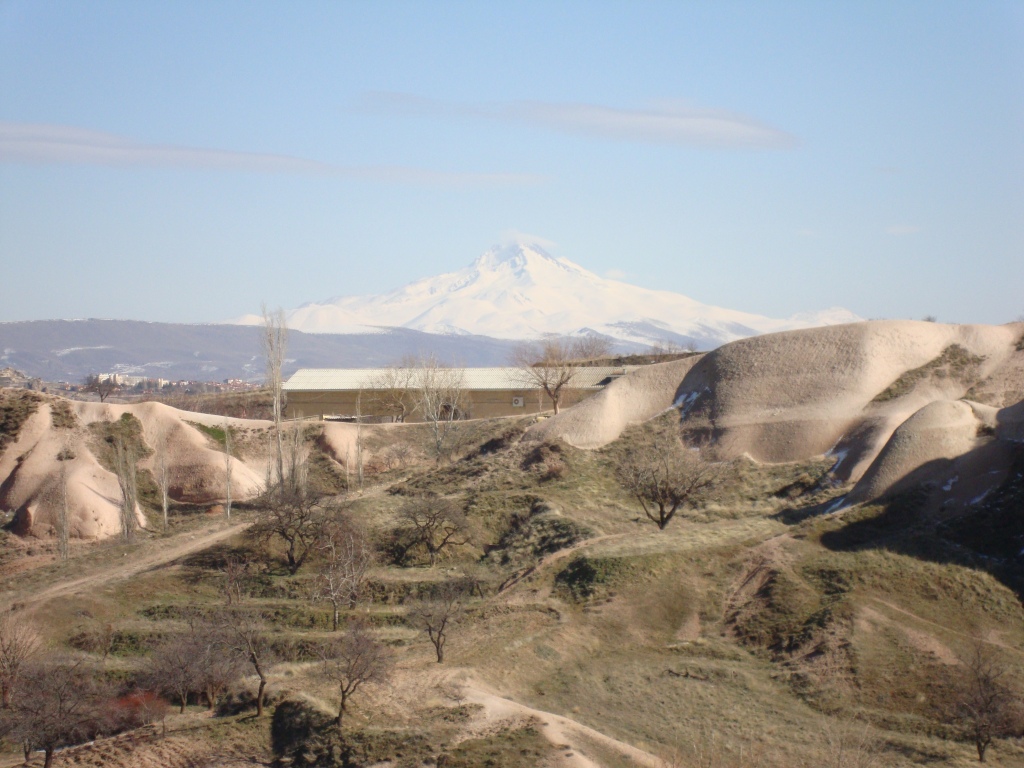
The road from Göreme takes you east towards it. It almost feels like the mountain is devouring the terrain around you as you get closer…

…

The city of Kayseri lies at the foot of Mount Erciyes and is a very large Turkish city. The most ancient area of settlement here was on a hill known today as Beştepeler (GPS Coordinates: 38°42’20.41″N, 35°28’13.38″E). It was on this hill that the ancient Caesarea Mazaca during St. Basil’s time once stood before St. Basil, as Bishop of Caesarea Mazaca, encouraged the settlement on the plain below Beştepeler where the modern city is today.
St. Basil the Great was an amazing man and Saint.
Born in the year 329 and died in 379 both in Caesarea Mazaca (Kayseri), St. Basil was one of ten children of St. Basil the Elder and St. Emmelia. He took advanced studies at Constantinople and in Athens, where St. Gregory of Nazianzus was one of his classmates.

After completing his studies, Basil taught rhetoric at Caesarea and then decided to pursue the religious life. He visited monasteries in Palestine, Syria, and Egypt, and in 358 settled as a hermit in the wilderness by the Iris River in the province of Pontus, north of Caesarea. He attracted numerous disciples, whom he organized into the first monastery in Asia Minor.
He was ordained a priest in 363 and, after working with St. Gregory to combat the heresy of Arianism (which held Jesus was not God, but superhuman), was elected archbishop of Caesarea in 370. As Archbishop of Caesarea, he was responsible for some fifty subordinate bishops of smaller dioceses. While Basil was archbishop, the Roman Emperor Valens launched a persecution of Christians professing Nicene Orthodoxy–Valens believed in Arianism. He demanded Basil submit to his demands; Basil refused, and in the confrontation of wills that followed, ultimately, Basil was triumphant and Nicene Orthodoxy (the Faith we profess today) was not stamped out.
He was active in helping the sick and the poor, built a hospice and a huge complex to minister to the ill (thought by some to be the world’s first hospital), and attracted huge throngs with his preaching. He died at Caesarea on January 1 (when his feast is celebrated in the East), a few months after Valens died on the battlefield, and the accession of Emperor Gratian to the throne halted the spread of Arianism.

Basil was one of the giants of the early Church. He was responsible for the victory of Nicene Orthodoxy over Arianism in the Byzantine East, and the denunciation of Arianism at the Council of Constantinople in 381-82 was in large measure due to his efforts. The organization and monastic rule he devised at Pontus became the basis of monastic life in the East (as was so of St. Benedict in the West) and remains so to the present day. Basil fought simony, aided the victims of drought and famine, strove for a better clergy, insisted on a rigid clerical discipline, fearlessly denounced evil wherever he detected it, and excommunicated those involved in the widespread prostitution traffic in Cappadocia. He was learned, accomplished in statesmanship, a man of great personal holiness, and one of the great orators of Christianity. His doctrinal writings and his four hundred letters (many still extant) had tremendous influence.
Upon arriving at the hill of ancient Caesarea Mazaca (Beştepeler), we drove to the top.

The top of the hill is now a very beautiful, forested park with lots of green grass and picnic tables. It even has a zoo. Because of all this municipal development, unfortunately, there isn’t much that can be seen of the ancient Caesarea. Additionally, I haven’t been able to find much on any excavations of this area. However, after doing some exploring, we were able to locate the remains of what appear to be some ancient buildings and walls on the southeast side of the hill (see photos below) (GPS Coordinates: 38°42’14.83″N, 35°28’16.00″E). I’m unsure of how old these might be.

Nevertheless, the view of modern Kayseri on the plain below was exquisite (see below). It was very cool to think we were here in honor of the great Saint–whom most people in Kayseri probably have never heard of–who was responsible for establishing settlements in the plain 1,700 years ago. Wow.

After asking St. Basil to pray for us and our intentions, we set out to the next stop on our pilgrimage: the remote city of Sivaş in central Turkey. In ancient times, Sivaş was known as Sebasteia (Σεβαστεία) or “Sebaste,” meaning that it was named in honor of an emperor using the title “Sebastos”–the Greek equivalent of the Roman title “Augustus.” Sebaste was the home of 41 of Christianity’s most revered martyrs: the “40 Martyrs of Sebaste” and the bishop of that city, St. Blaise.
…yes, people…*THE* St. Blaise…the Saint whom Catholics around the world each year ask for prayers to God to prevent ailments to the throat! Each February (usually close to St. Blaise’s annual Feast Day on 3 February), priests use two candles which they place near the throats of each person and pray:
“Through the intercession of Saint Blaise, bishop and martyr, may God deliver you from every disease of the throat and from every other illness: In the name of the Father, and of the Son, + and of the Holy Spirit. Amen.”
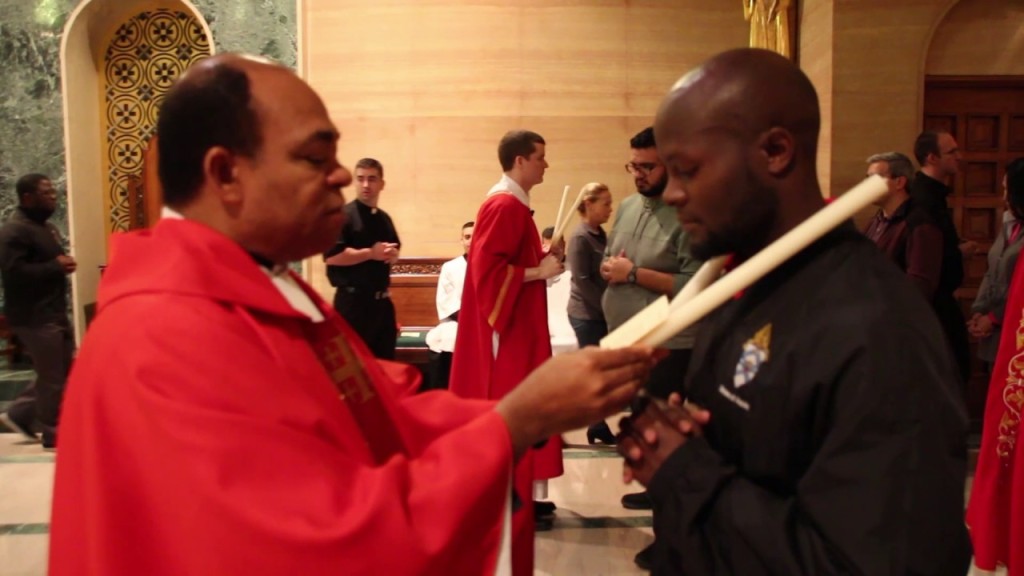
The origins of this holy tradition come from a miracle done at the hands of Blaise.
Little is known about the life of St. Blaise, and much of what we know of him comes from pious tradition. We know that St. Blaise was born in the 200s, made Bishop of Sebaste, and was captured, tortured, and martyred on the order of the Roman Governor of Cappadocia and Lower/Lesser Armenia, Agricolaus, during a persecution of Christians in A.D. 316. (Note: In many articles about St. Blaise, it says he was a bishop in “Armenia.” In Roman times, the area encompassing Sebaste/Sivaş was within the Roman province of “Lesser Armenia,” however, this area is now within modern Turkey, not within modern Armenia.)
When St. Blaise was captured, it is likely he was brought to the citadel of ancient Sebaste which was located on a hill overlooking the city. It would have been here, tradition has it, that St. Blaise miraculously cured a boy who had a fishbone in his throat and was in danger of choking to death. His mother, in turn, gifted him with two candles for light in his gloomy cell. In Roman custody, Blaise was beaten, his flesh scourged with iron wool carding combs (like miniature garden rakes for sheep wool), and finally beheaded for refusing to renounce his faith.
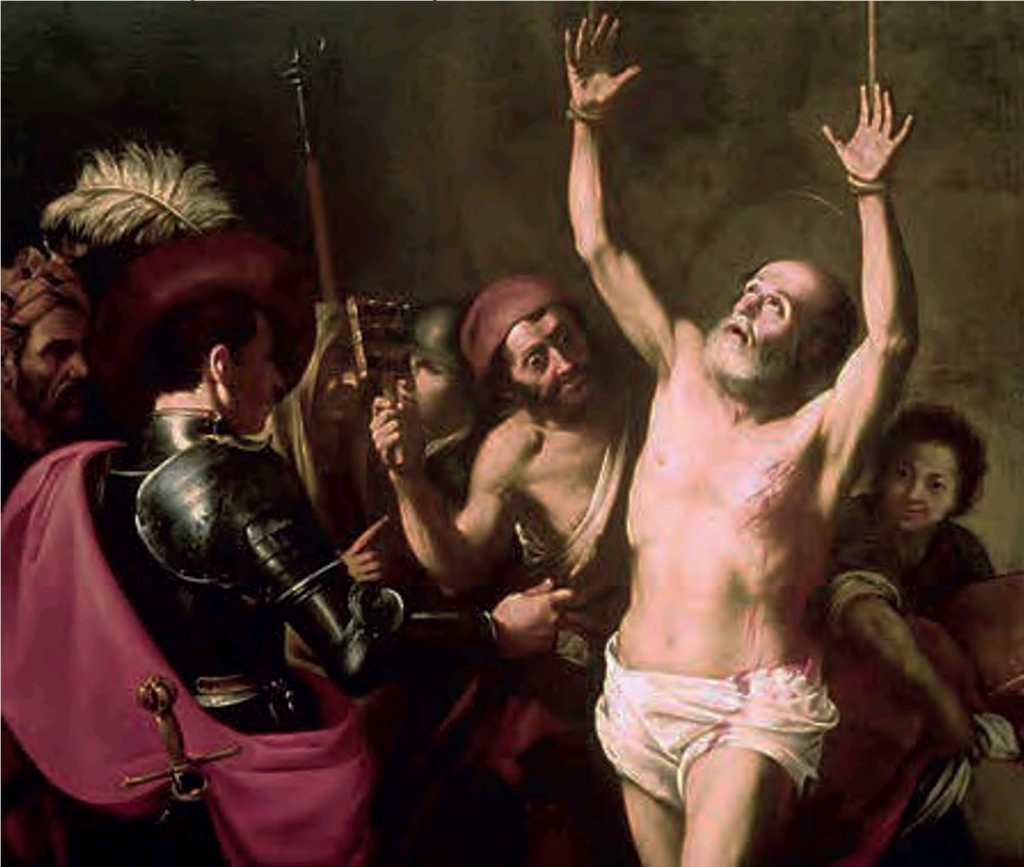
Many years later, in the mid-A.D. 1200s, a Flemish Franciscan missionary to the East named William of Rubruck states in his account of his journey in the East: “We were in Sebaste in Lesser Hermenia…there is at that place a church of Saint Blaise, but I could not go there, for it was up in the citadel.” Also, according to 19th Century Scottish geographer Henry Yule’s commentary on Marco Polo’s account of his travels, in the 1800s, St. Blaise’s tomb was being shown to travelers “near the citadel mount.” Although these pieces of evidence are relatively new compared to when St. Blaise’s martyrdom likely occurred in A.D. 316, they do point to some association between St. Blaise and the citadel which lends one to believe this is where the Saint suffered.

Father and I made it to Sivaş in the late afternoon and drove directly to the top of the Sivaş citadel mount (also known as “Sivaş Kalesi” or “Sivaş Castle” in English) (GPS Coordinates: 39°44’43.65″N, 37° 0’54.25″E).
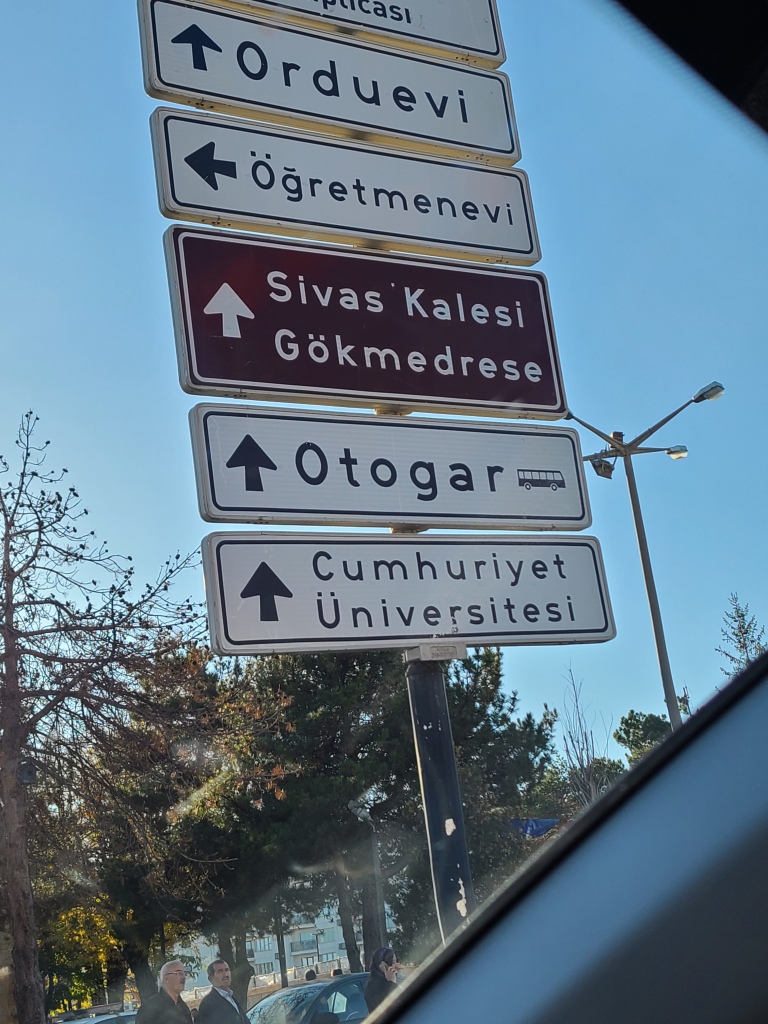

We continued to be blessed with clear, sunny weather. Similar to Beştepeler, the top of the citadel has been made into a nice city park with many young couples chatting and enjoying the lovely view of the city. Father and I walked around the summit of the mount and meditated about St. Blaise being led up here to his death. It was a powerful moment and I meditated about what could have actually happened to him here. Where we were walking was probably holy ground–watered by the blood of one of the Church’s great martyrs.

While exploring the summit, we found some of the natural rock of the mount that would have existed when St. Blaise was here.
I had an icon of St. Blaise which I touched to the rock and Father had brought some candles with that he could use from here forward to bless the throats of his parishioners. It was quite a site to see…St. Blaise and candles back on the mount where he was probably executed (see photo below).
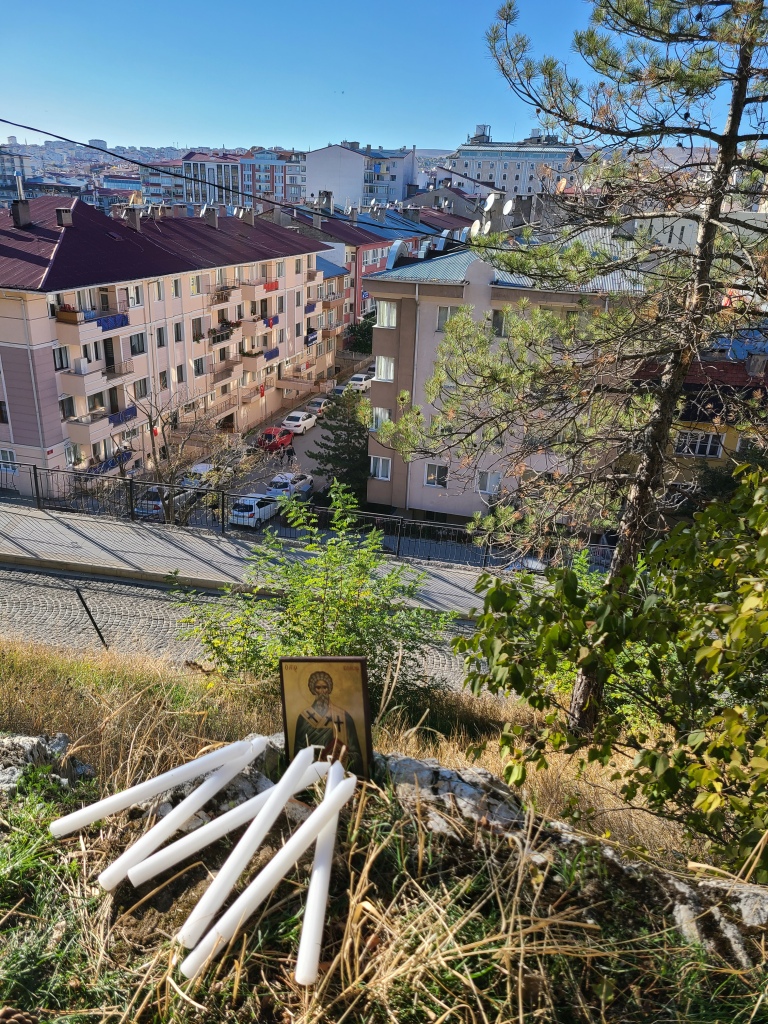
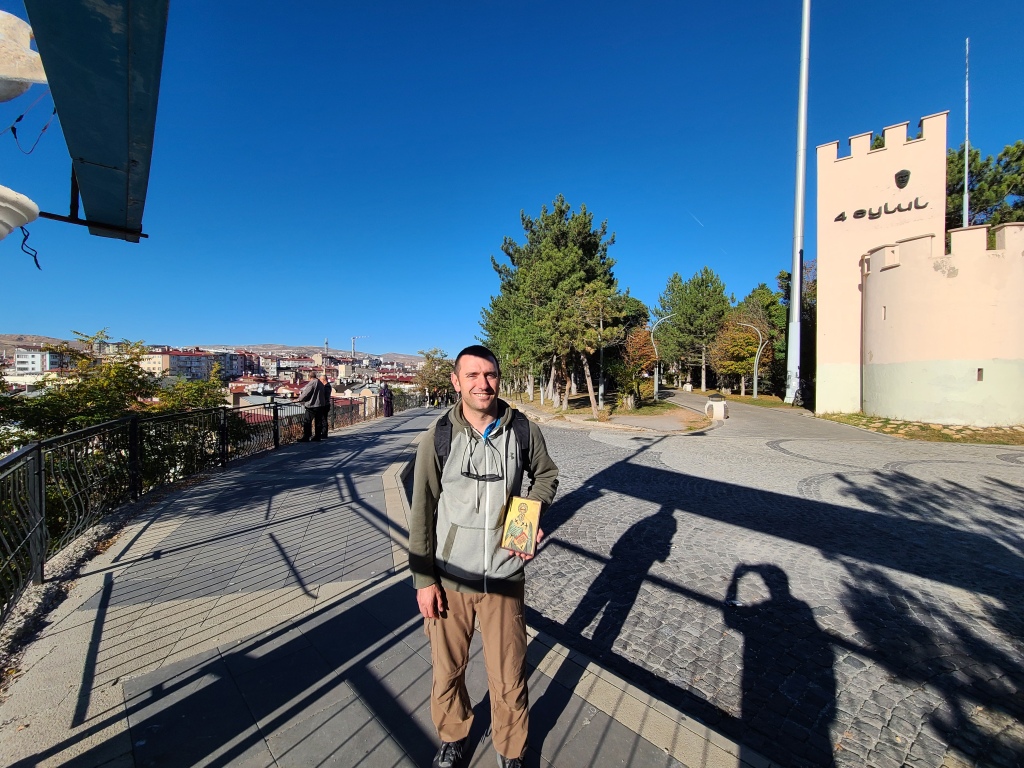
///Side Note: In February 2023, I took this same icon to St. Blasien, Germany–a small town in the Black Forest named after St. Blaise with a grand Cathedral dedicated to him (GPS Coordinates: 47°45’36.99″N, 8° 7’48.62″E). The church had a couple of his relics–fragments of his bone–on display there. It was yet another moving experience, made all the more so since I had been to the city where their patron Saint had suffered and died in imitation of Christ. (See photos below)


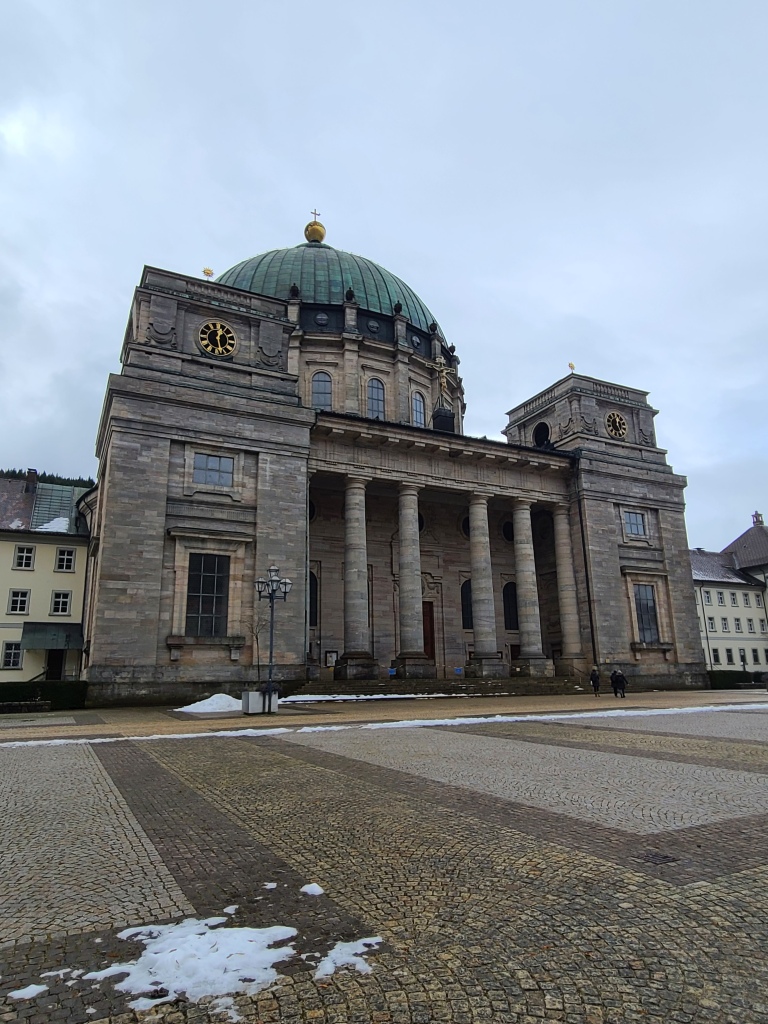
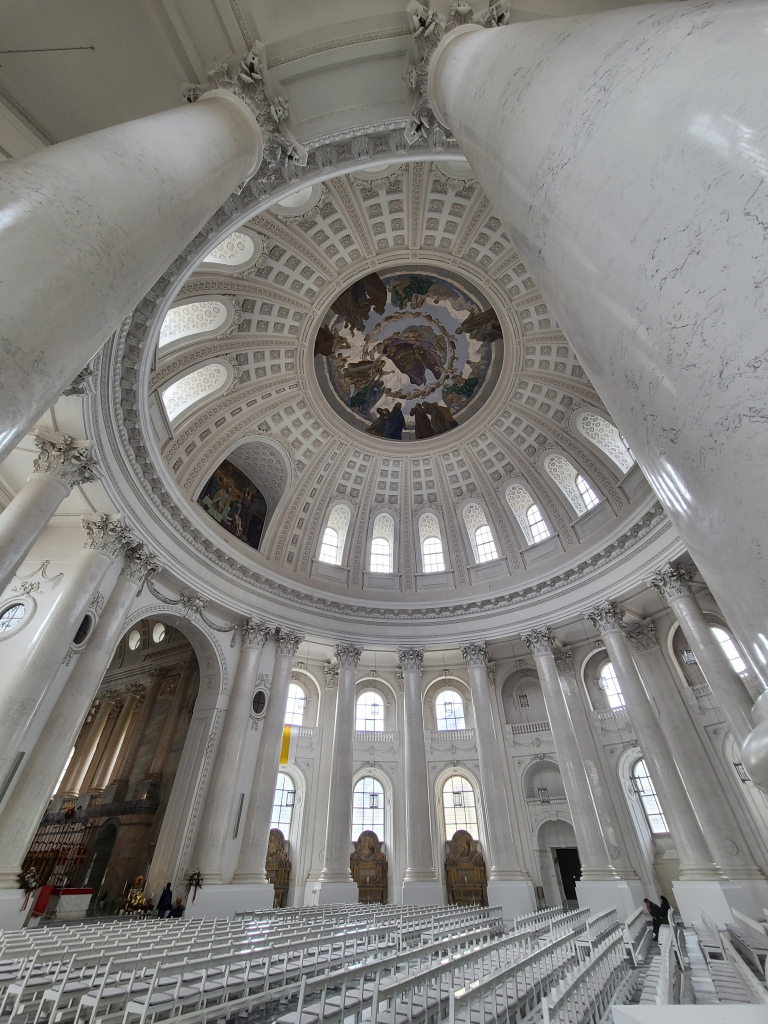

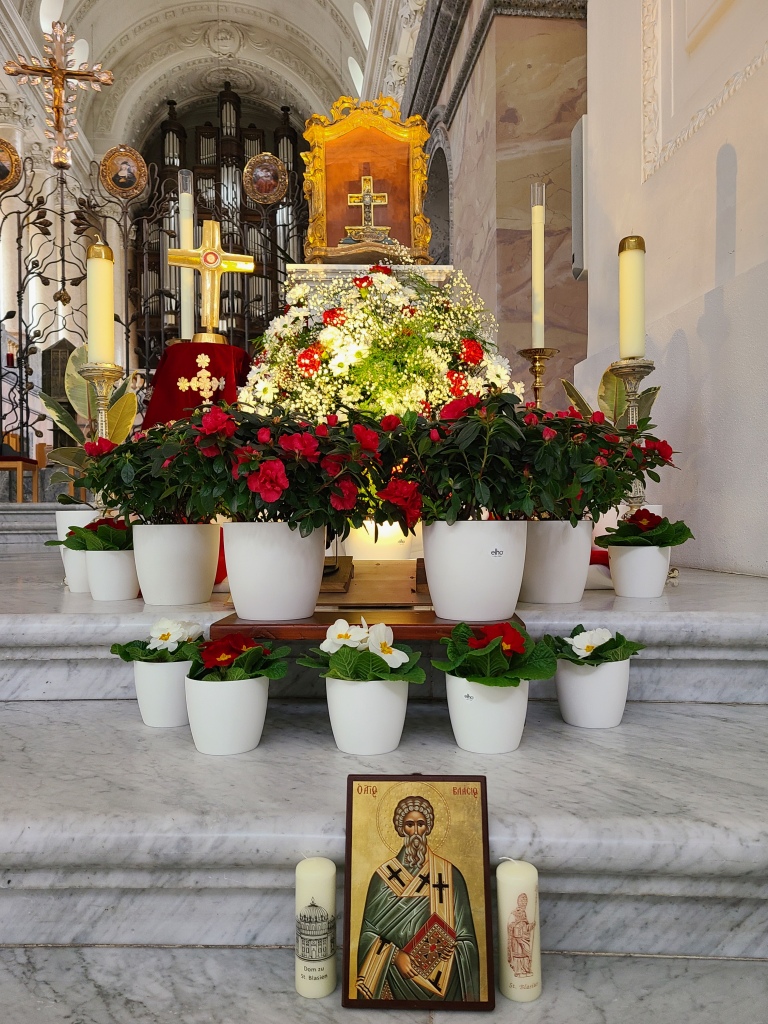


A sculpture of the blessed head of St. Blaise, bishop and martyr in St. Blasien, Germany.

///
As Father and I made our way back to our rental car, I noticed a unique, beautiful little area overlooked by a tree with beautiful yellow leaves turning red and with a circle of thorny roses planted there….It made me wonder…
…I’ve been to many places where a holy event, such as a martyrdom or an event from scripture, has taken place that is not commemorated with a plaque, monument, or church. However, while there, I will sometimes notice physical characteristics of the place that stand out. I wonder if this could be God speaking through His creation and saying silently “take note: this place is special.”
Could this spot (see below) have been the actual spot of St. Blaise’s beheading? Could God have inspired the gardener or grounds maintainer for this park (who probably is Muslim) to plant flowers in a circle here, for no particular reason known to them, but known to Him? We’ll probably never be able to know in our lifetimes, but it wouldn’t surprise me if this was the spot, marked by God’s creation, where his holy Saint was beheaded.

St. Blaise, pray for us!

After our short visit to Sivaş, we set out on a two-hour drive to see the last holy site of our trip: the little town of Akbelen, Turkey! Never heard of it? There are few people in the world who know of it, and even fewer that know its significance.
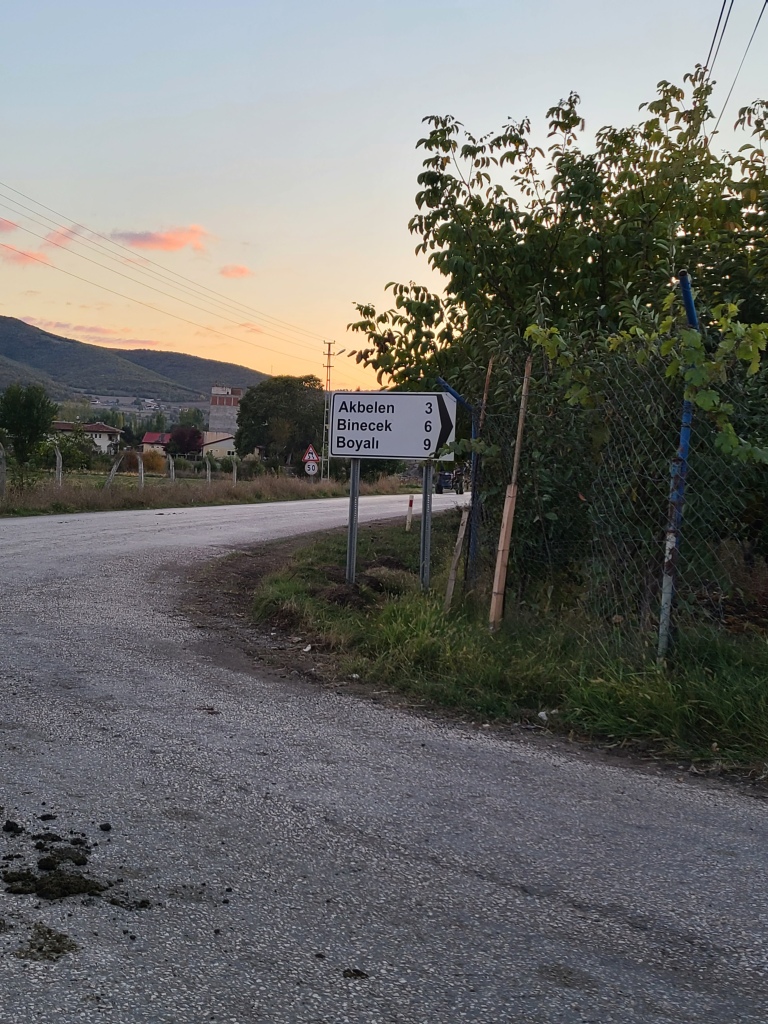
It was in this little town where the great Doctor of the Church, Eastern Church Father, and Archbishop of Constantinople (Istanbul), St. John “Chrysostom” (Greek for “Golden Mouthed” because of his amazing preaching abilities), passed away from sickness and exhaustion on 14 September 407. He was one of the greatest preachers in all of the Church’s 2,000 year history. (Side note: My opinion only…but I think when Fr. Mike Schmitz is canonized a Saint some day in the future, the Church should bring back the “Chrysostom” nickname! He certainly has earned it. “St. Michael Chrysostom” has a good ring to it!)
St. John Chrysostom has an incredible story.
John was born to a Christian mother and pagan father in around A.D. 347 in Antioch in Syria (modern Antakya, Turkey). His father died when he was young and his mother sent John to the best schools in Antioch to develop his skills with oratory.
When he was about 20 years old, St. John met the bishop of Antioch and was so impacted by his piety and character that he began to devote himself to an ascetic and religious life. He was ordained a lector three years later and soon after made the decision to become a monk. After four years as a monk, John became an anchorite (a religious person living in solitude), taking residence in the caves of the mountains overlooking Antioch. The hermits in these caves were intense and were known for great acts of fasting and abstinence out of love for God and in reparation for sin. Particularly, some of these monks would undertake “sitting fasts” where they would give up sitting down (even when sleeping!) for extended periods of time. John was an anchorite for two years until he made the decision due to health reasons to come back into the city as a lector.
John was ordained a priest in A.D. 386 and was charged at this point with preaching in Antioch’s cathedral. His sermons to the people were absolutely epic and, thankfully, many of them were written down so we can read them to this day. His fame spread throughout the Byzantine Empire (i.e. the Eastern Roman Empire). John was also a very accomplished writer who was even lauded by his contemporary, St. Jerome.
When Constantinople’s bishop passed away in September 397, the Byzantine Emperor Areadius hand-picked John for bishop of his capital. John was so popular in Antioch, though, that the emperor’s troops had to whisk him away, without the knowledge of the people, to Constantinople for fear of riots starting. John was ordained Archbishop of Constantinople on 26 February 398 and began to institute reforms in his new diocese. He ceased the practice of hosting lavish social gatherings and made reforms to the clergy. His virulence in speaking out against extravagance in worldly things caused the empress, Eudoxia, to resent John. She collaborated with his ecclesial rivals to have him deposed as archbishop and banished by the emperor in around October 403. This was short-lived, however, when the people of the city became riotous because of the emperor’s action, and John was brought back after only being taken 40 miles out from Constantinople.
Not long after though, John’s preaching got him in trouble with the Empress once again, and the Emperor signed another decree of exile on 24 June 404. John was seized by Byzantine troops in the middle of the liturgy of Baptism for new catechumens on Easter Eve and led into exile. His banishment caused riots in Constantinople, which led to the first Hagia Sophia Cathedral being burned down (the Hagia Sophia standing today in Istanbul is actually the third church to stand on the site).
This time, however, the emperor would not bring him back…
John was taken by Byzantine troops 450 miles as the crow flies to Cucusus (modern Göksun in central Turkey). Despite his exile, John never gave up the hope to return. He was able to send letters to friends and even sent a letter to Pope Innocent I requesting his support. The Pope protested John’s banishment and sent a delegation to Constantinople to intercede on behalf of John in A.D. 405–but, the Pope’s legates were imprisoned and then sent home.
Likely because John was still exerting influence even in exile, and because he simply wasn’t dying fast enough for his enemies, yet another exile order was issued. This time, John was to be escorted even further away by two soldiers to the easternmost settlement of the Roman Empire–ironically named “Pityus” (modern Pitsunda, Georgia). The journey would be 230 miles through mountainous territory to the port of Polemonion near the modern town of Fatsa, Turkey, and another 207 miles by boat across the Black Sea to Pityus.
The three men set out on around 25 August 407 in the blazing Turkish summer heat. It was said the two soldiers were promised a promotion if John “didn’t make it” along the way. He was given no mule or litter to use but was forced to walk. John was about 60 years old and his health was not the best–it had to have been an excruciating journey. He was led over the course of three weeks 173 miles by foot through rugged terrain to the town of Akbelen (also known as Bizeri), near the city of ancient Comana (GPS Coordinates: 40°21’27.21″N, 36°38’19.30″E). John was exhausted, had a fever, and his face was burned dark red from the sun. The town was built around the shrine of a local martyr named St. Basiliscus, and the three men stayed the night there near the martyr’s tomb. The next morning, 14 September 407, John begged the soldiers to delay their departure until the fifth hour (11 AM), but they refused and led John another three miles or so until St. John collapsed from exhaustion. The soldiers brought John back to the Chapel of St. Basiliscus where he received Holy Communion, laid down, and breathed his last. According to the only surviving account of his final days, John’s last words were–despite his many sufferings–“Glory be to God for everything.”
John’s body was interred close by that of St. Basiliscus in the small church at Akbelen until attitudes and royalty changed in Constantinople. About 30 years later, St. John Chrysostom’s remains were brought back to Constantinople on 27 January 438 in a magnificent ceremony. In fact, when the reliquary came ashore at Constantinople it was the reigning emperor, Theodosius II–the son of the emperor and empress who had banished John–who was there to receive it. He solemnly bowed and pressed his forehead against it praying for pardon for his parents’ actions. John’s remains were then deposited in the Church of the Holy Apostles (which stood on the site of the modern day Fatih Mosque in Istanbul), until soldiers from the Fourth Crusade took them to Rome where they remain today under the altar in the Chapel of the Choir in St. Peter’s Basilica (see below).


In an act of reparation, solidarity, and love for the Eastern Church, Pope St. John Paul II ordered in 2004 (the 800th anniversary of the Fourth Crusade) that portions of the remains of St. Gregory of Nazianzus and St. John Chrysostom be disinterred from St. Peter’s Basilica and sent to the Patriarch of the Greek Orthodox Church, Patriarch Bartholomew I in Constantinople/Istanbul. It was an impressive gesture that was meant to heal the near 1,000-year divide between the western and eastern churches.
St. Gregory and St. John (left to right in the photo below)–both Archbishops of Constantinople–were once again back in the city of their diocese after 800 years! These remains can be seen to this day in the Church of St. George at the Phanar in Istanbul (see my post on my visit to this church here: https://zistezesto.wordpress.com/2022/10/04/in-turkey-following-the-footsteps-of-apostles-church-doctors-fathers-achilles/) (GPS Coordinates: 41° 1’45.17″N, 28°57’6.19″E). They are inside glass boxes in marble cases beside icons of each respective Saint.

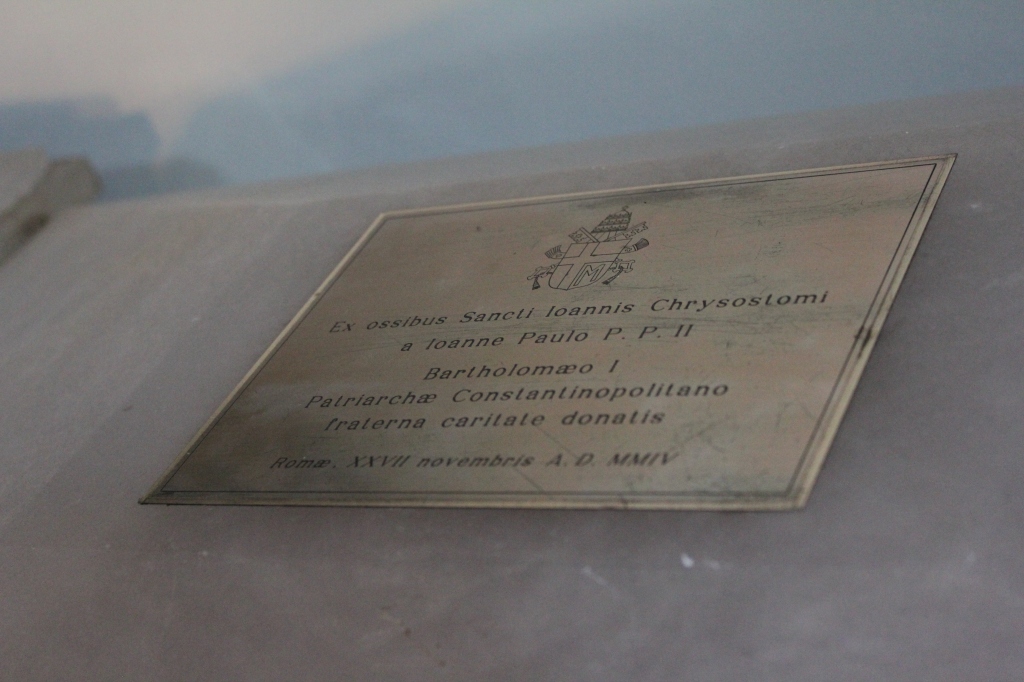
The bones of St. John Chrysostom at the Church of St. George at the Phanar in Istanbul, Turkey:

…
Father and I arrived in the town of Akbelen along what may have been the same northbound road used by St. John that went through the center of the town. Akbelen is extremely rustic, but the residents were NOT lacking in satellite TV dishes! Haha… Below is a photo of the town as we were entering it.

In about February of 2015, I was doing some research to see if I could find any images of the ruins of the Chapel of St. Basiliscus. On Google Earth, I zoomed in to Akbelen and was surprised and pleased to see there were a couple photos posted in the middle of Akbelen that depicted the walls of what appeared to be some kind of unique structure. The title of the photos was something like “manastir” which is “monastery” in Turkish. According to my research, an Armenian monastery indeed was built over the site of St. Basiliscus’s Church. In all likelihood, I had virtually re-discovered the site of St. John’s death. I saved the GPS coordinates and waited for an opportunity to return to Turkey to survey the site for myself. Now, nearly 7 years later, I thankfully would finally have that opportunity.
Father and I pulled up to the monastery walls in the center of the town (see photo below). They were the same I had seen in the photos posted to Google Earth! However, I was unsure of what was on the other side of the walls. Was there an entrance? Were there still any Christian Armenians present here? Father and I began trying to find out, however, it was getting late in the day and we were running out of sunlight. First, a man in a window in the house overlooking the walls called out to us in Turkish. I greeted him and said in broken Turkish diction “Kilise?”–meaning “church?” and pointed to the walls. The man said some things in Turkish but, ultimately, we could not communicate with him.

Another Turkish man was walking down the street towards us, apparently getting back into town after farming all day. We greeted him and once again asked “Kilise?”–meaning “church?” and pointed towards the walls. He seemed confused but he seemed willing to try to help. We repeated “kilise?” a couple times to him and he said “evet” which means “yes” in Turkish. The man then bent over and traced something on the ground with his finger (see photo below). He had traced a cross. We were ecstatic and said “Evet! Evet!” He smiled. Using hand motions, I attempted to ask him about how we were to enter the monastery area. He probably didn’t know exactly what I was asking but pointed towards the walls and said “evet.” We thanked him and he walked away.

We thought he had indicated the entrance was around the corner on the opposite side of the long wall we had parked beside, so Father and I started walking around the walls of the structure. We noticed there was a gradual slope upwards around the corner. We walked up this slope (see picture below) and then took a second left turn to take us to the opposite side of the wall we had parked beside.
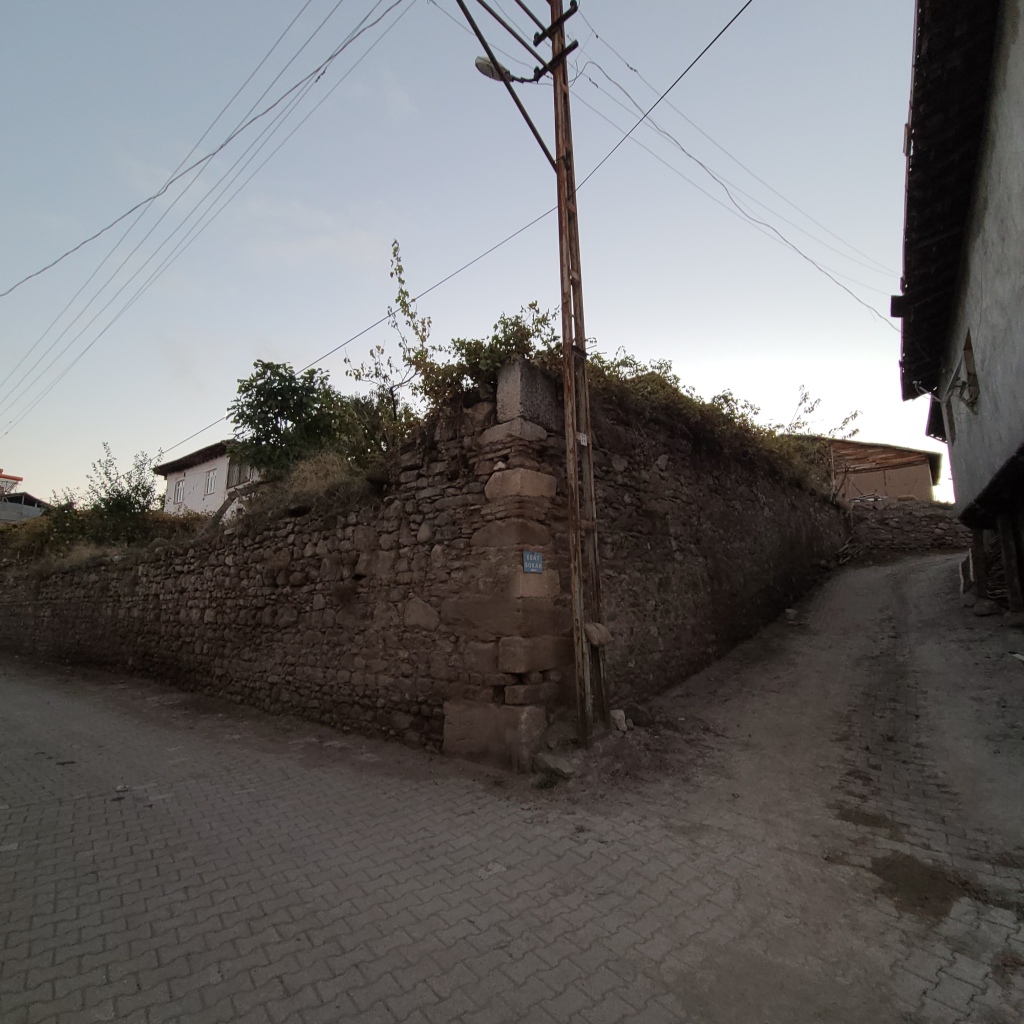
I was a bit shocked when we got to the top (see below). I had always thought there would be some kind of structure or residence on the other side of the walls but, instead, there was a garden and a house above the walls! The walls of the monastery were not perimeter walls per se around the monastery, but retaining walls. There were no church structures nor any clear indication there was or had been a church here. Maybe we had misunderstood the man who had traced the cross on the ground and maybe the church was actually somewhere further into the town beyond where the walls were? We attempted to talk to another group of Turkish men we saw to see if they might be able to help, but they were not able. We saw another man–with a great mustache–whose house was not far from the garden and tried to communicate with him using Google Translate. He said quite a bit to us in Turkish, but Google Translate’s “talk to text” feature wasn’t effective for us and the man looked at us strangely as we held our phones up trying to get a good recording of what he was saying so we could see a transcript in English. We could tell the man was starting to get a little flustered, so we kindly thanked him and broke contact amicably.
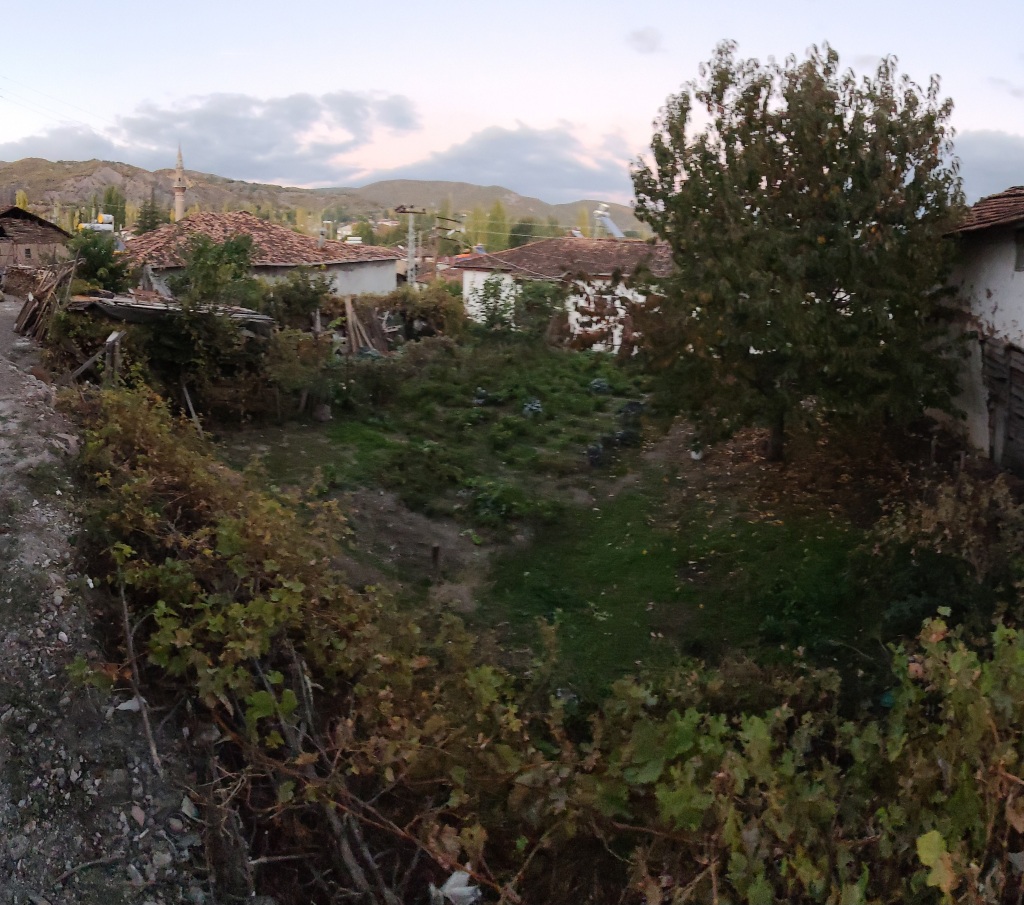
At this point, I was a bit downtrodden. We had come all this way to see this remote site, which we might never come back to see again in our lifetimes, and it appeared we were going to be unable to definitively identify if this was actually the place where St. John Chrysostom had passed away. It was almost dark so we wouldn’t be able to see much anymore anyhow. Our flight home out of Ankara left in the afternoon the next day, but Ankara was a five hour drive from our hotel in Tokat, Turkey and we would need to start driving early the next day. As Father and I discussed the situation, Father paused and then said “We could just come back early tomorrow morning again. If we get here at 8AM we’ll have about an hour or so here with sunlight before we have to leave for Ankara to have sufficient time to make our flight.”
Father was right! And, I was so grateful my friend wanted to double-down our efforts and return to this desolate little place the next day. I never thought I’d ever come back to Akbelen in my life after visiting once, but…I was overjoyed to be able to come back again the very next day!
For the next day, however, we had to come prepared. That night in our hotel, we used Google Translate to write out a script in Turkish that we would use to show people in Akbelen to introduce ourselves, explain why we were there, explain we were going to use Father’s phone to translate what they told us into English, and to ask carefully-worded questions about the church.
The next morning, we work up early and set back out to Akbelen. It was another clear, crisp Fall morning. When we arrived in Akbelen, I got some pictures of a personal icon I own of St. John Chrysostom with what we thought were the walls around the site where he had died.
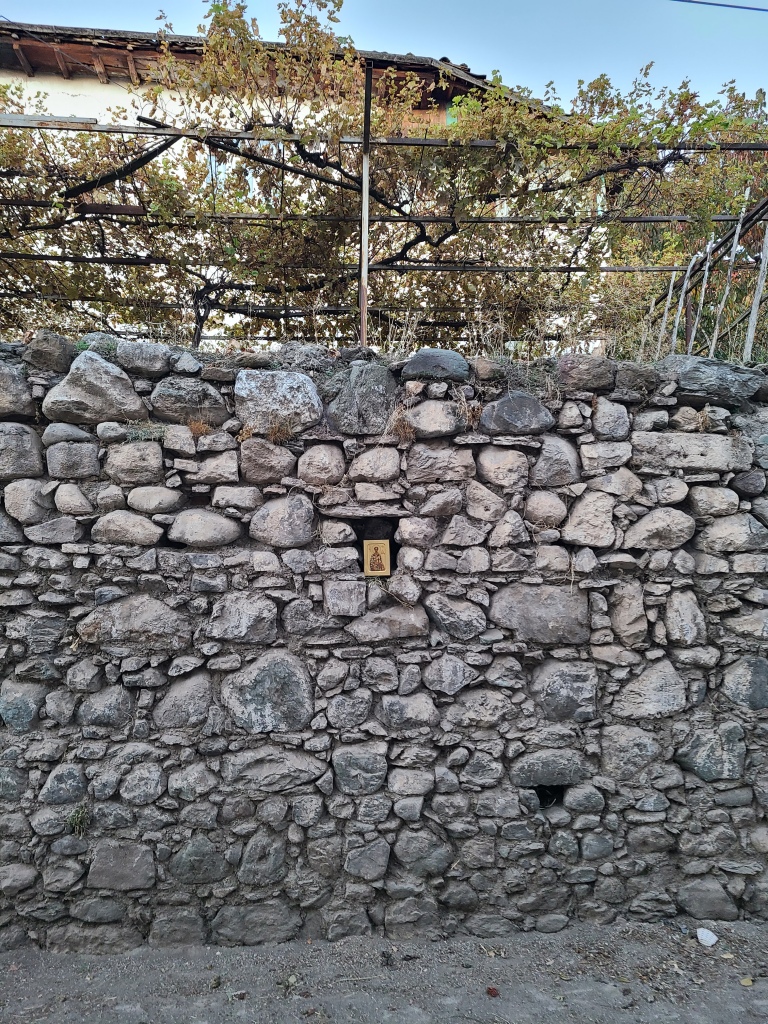
The town was very quiet at 8AM and we looked around for some people to talk to. I kept asking for St. John’s intercession for God’s grace to determine if the church was indeed here. We found a person loading a farming cart, but he seemed too busy, so we kept walking. We went back up to the area overlooking the garden where we thought the Chapel of St. Basiliscus where St. John died was located. We couldn’t find anyone to talk to and we started to get low on time.
As we looked for someone to talk to, we noticed the Turkish man with the great mustache was outside his home getting ready for the day. I was hesitant to make contact with him again since it appeared he was starting to get a little frustrated the day before when he couldn’t communicate with us, but Father was confident and went with it! We offered the man a very friendly “good morning” and Father then showed him his phone. His phone had a Turkish script we created the night before with Google Translate asking if he would be ok for us to ask him questions and then he could speak answers into the phone which would translate them into English. The man looked slightly exasperated when he first saw us, but read Father’s phone, paused, looked at us and said “evet!”–“yes!” He was willing to answer questions! Father started showing him questions about the site which we had translated into Turkish the night before. We asked if there had been a church where the garden was now. The man responded “evet”–“yes!” He then spoke some Turkish very carefully into Father’s phone. We looked at the translation in English. The man had said the church here had been destroyed about a century ago.
His statement made historical sense because this corresponds to the time of the great 1923 Greek – Turkish Population Exchange where Orthodox Christians were moved from their traditional homes in Turkey to Greece and Muslims in Greece were moved to Turkey. 1.6 million people total were moved in an effort to prevent reprisal killings between the Greeks and Turks (historical rivals) after the end of World War I. In the process of the exchange, many churches, homes, and even towns were left abandoned in Turkey and either destroyed or re-purposed.
We excitedly thanked him for his help. He smiled and then gestured to us that he had one more thing to say. We put Father’s phone up to the man and he spoke more Turkish into the phone. We looked at the translation and were shocked. The man had said–very wisely:
“There is nothing for you here now, only prayer.”
We emphatically thanked the man in Turkish. He smiled, bowed slightly, and walked back to his home.
With God’s grace from the prayers of St. John, we had done it! The site of the garden, held up by the retaining wall, was indeed the site of the ancient Chapel of St. Basiliscus, where the great St. John Chrysostom spoke his last words through his “golden mouth.” (GPS Coordinates: 40°26’40.73″N, 36°40’49.60″E)
The sun had fully risen by this point and bathed the town and surrounding valley in an almost majestic golden light. We knelt down overlooking the garden and Father prayed the prayers from the Mass of St. John’s Feast Day, thanking God for St. John’s example and asking for God’s graces through St. John’s intercession. It was a sublime moment.


As I was taking pictures, I took note of the single, large tree springing out of the garden (see photo below). Similar to my reflections on the citadel hill of Sivaş the day prior, I reflected on if the spot where the tree had sprung up was the exact spot where St. John actually had died. Again, we will probably never know in this life, however, it’s fun and enlightening to reflect on messages the Lord may give us through His creation. The tree was strong, and its branches appeared to have long reach for its size. Perhaps the Lord had caused this tree to grow at the spot of St. John’s death to commemorate his life, the power of his golden words, and the spread of his teachings on Christ throughout the world for all history. Again, I would not be surprised.

St. John Chrysostom, pray for us!
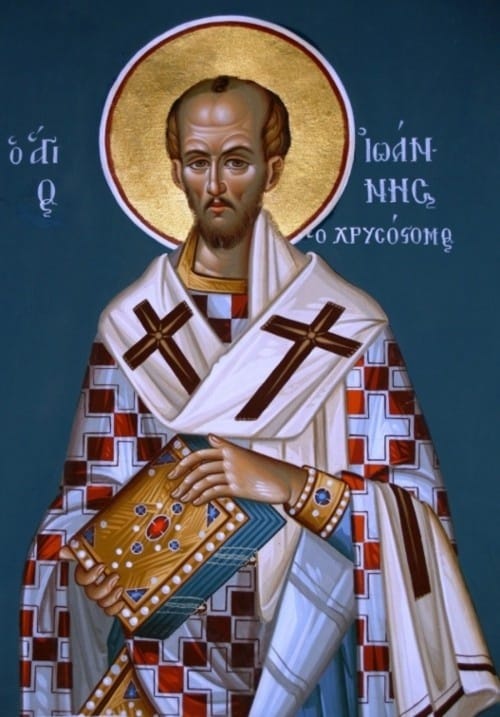
We had set a one-hour time limit for ourselves at Akbelen so we could be on the road with sufficient time to drive to Ankara. Everything at Akbelen took about 45 minutes–perfect timing–and we started out on our five hour drive to Ankara. It was a beautiful drive through northern Turkey. One of the small towns along our way to Ankara was the town of Zile (ancient Zela). It was here in 47 B.C. at the Battle of Zela the Roman general and statesman, Julius Caesar, fought the ambitious King Pharnaces of Pontus who wanted to extend his control over all of Asia Minor (i.e. modern Turkey).

Caesar ended up crushing Pharnaces in the battle, which took place at the field below, north of the modern town (GPS Coordinates: 40°19’20.20″N, 35°52’16.64″E). After the battle, Caesar wrote a dispatch to Rome containing three words that would go down in history and exemplified the ruthless efficiency and skill of the Roman Military. In Latin, Caesar stated about the Battle of Zela: “Veni, vidi, vici.”–“I came, I saw, I conquered.” Although we couldn’t stay at the battlefield long, it was amazing to be at such a historic place where one of history’s great military commanders did what he did best, and also wrote perhaps the most famous battle report in history…epic words the world will never forget.

After stopping at the battlefield, we got back on the highway and drove the rest of the way to Ankara for our flight back home. It had been yet another incredible pilgrimage, filled with God’s blessings. All thanks to Him for a safe and holy adventure! Thanks also to His mother, St. Raphael the Archangel, St. Frances of Rome, and St. Christopher for their prayers for our safe travels. Thanks once again to Father J. for coming with me on this ambitious pilgrimage–it was a lot of driving, but worth every second! Last but not least, thanks to my amazing wife and kids for allowing me to trace the steps of the heroes of our faith on this and many other trips–I can’t thank them enough!
If you enjoyed, this post, check out my one-of-a-kind book, The Second Person of the Trinity in Time and Space: What is Known Historically About Jesus and the Holy Sites of the New Testament, sold on Amazon.com! (see below)
.wordads-ad-wrapper {display:none;font: normal 11px Arial, sans-serif;letter-spacing: 1px;text-decoration: none;width: 100%;margin: 25px auto;padding: 0;}.wordads-ad-title {margin-bottom: 5px;}.wordads-ad-controls {margin-top: 5px;text-align: right;}.wordads-ad-controls span {cursor: pointer;}.wordads-ad {width: fit-content;margin: 0 auto;}
